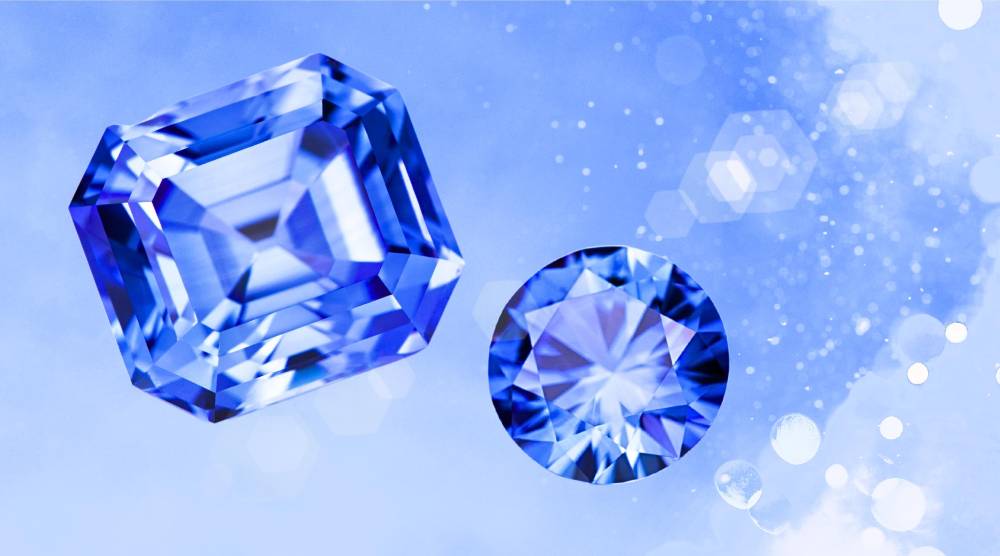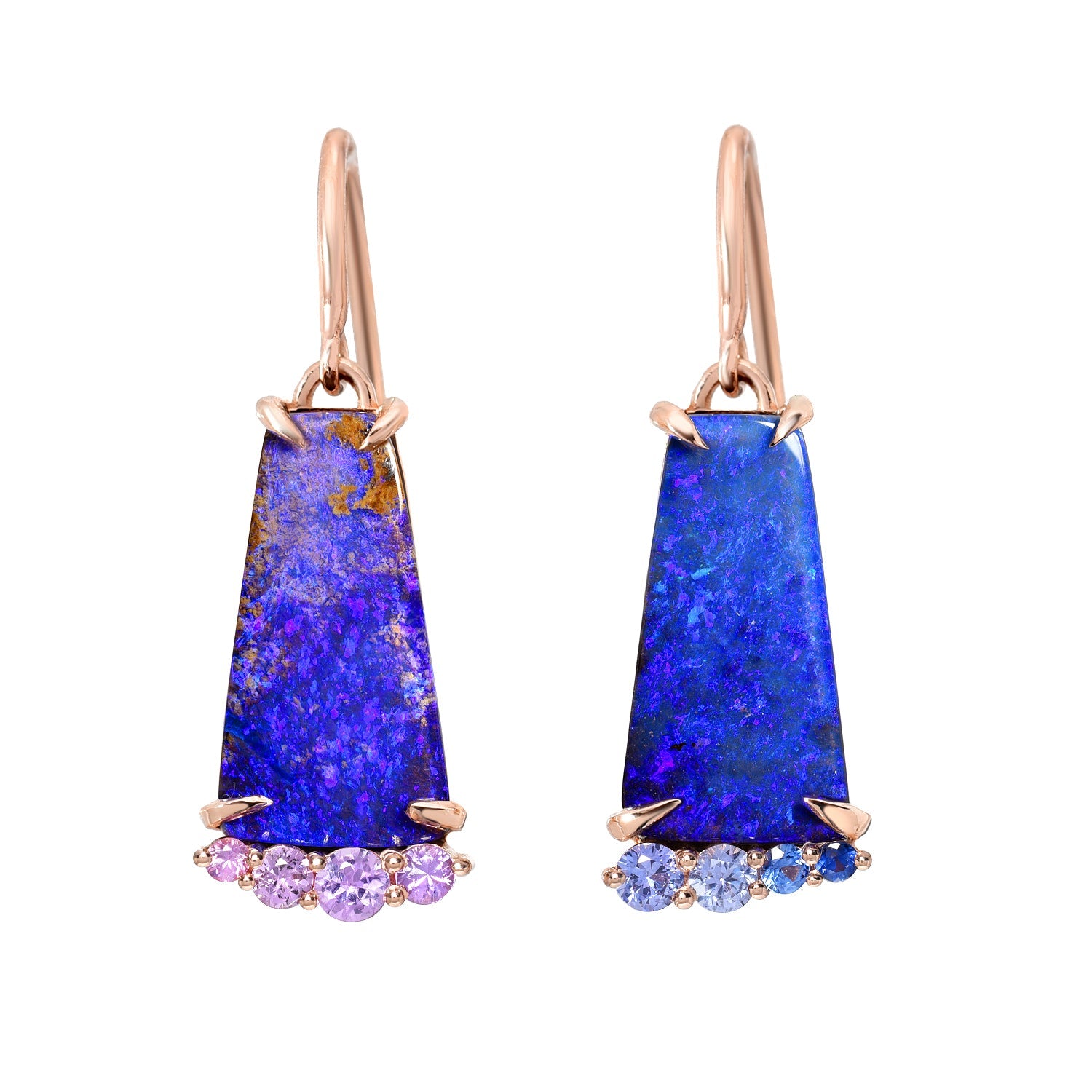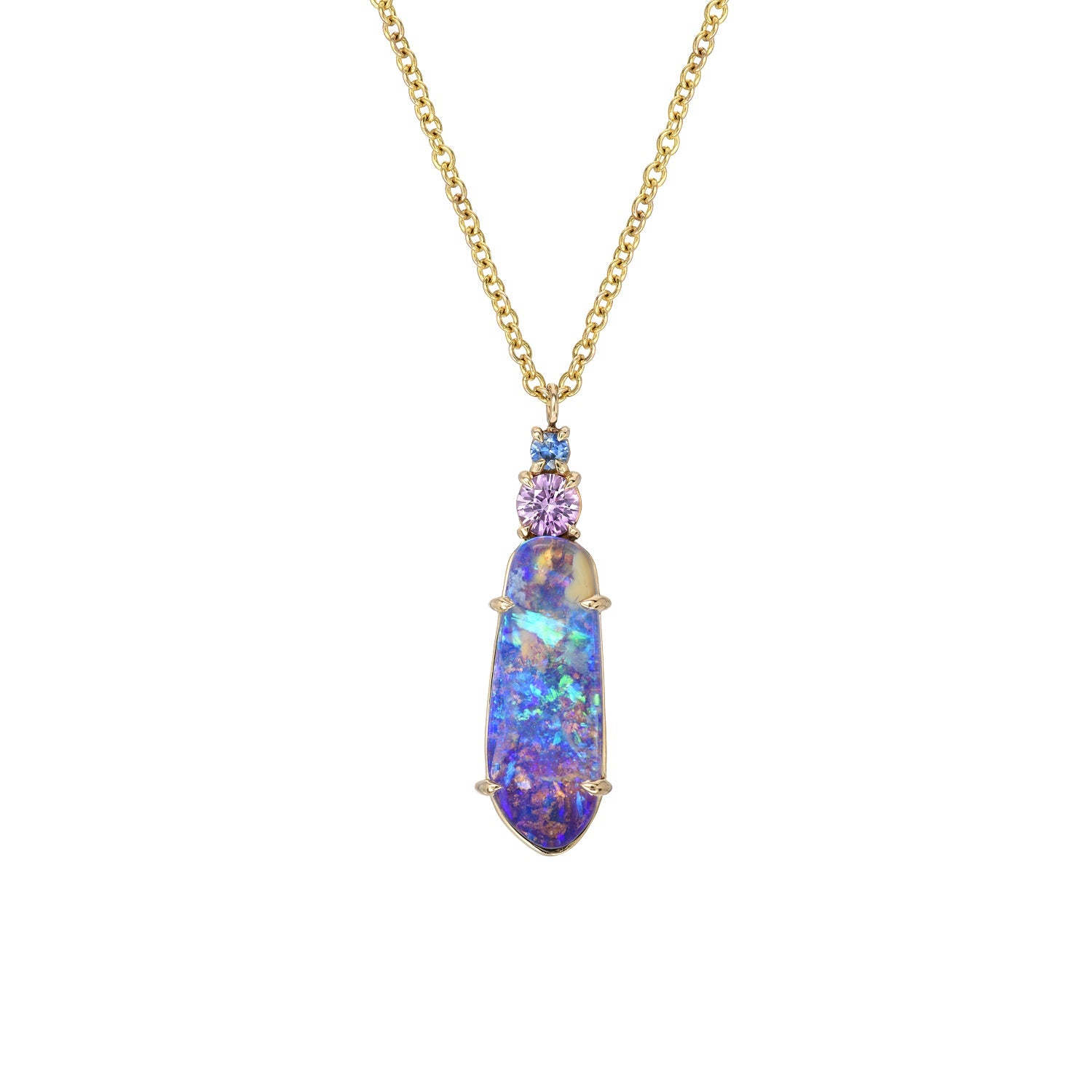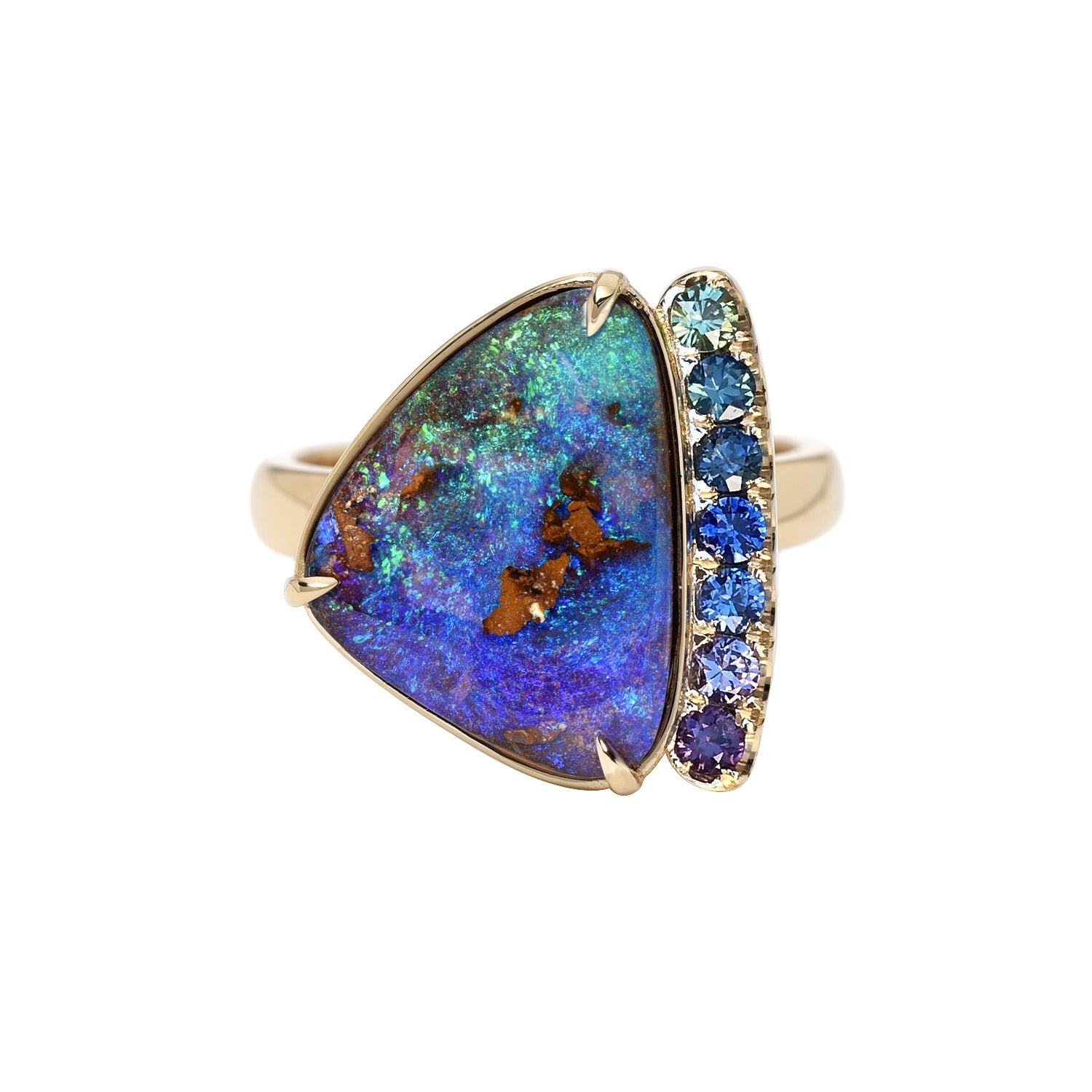
Sapphires and their heavenly blue
luis gomezShare
Here at NIXIN, we strive to delight our customers — offer you one-of-a-kind artistic pieces fueled by our passion and our devotion to colorful gemstones. It’s no secret, Opals are our starlets, nevertheless, like all great headliners, they shine brightest when in the company of equally amazing co-stars. Pairings that work to spotlight their nuances and elevate their beauty. At NIXIN Jewelry, we complement Opal’s natural charisma with other extraordinary gemstones, amongst them diamonds, emeralds, pearls, and sapphires. In this blog article we’re going to explore the last of that grouping, sapphires. Not only what they are, but also what they mean to certain cultures, how they are used, the colors and types you might encounter, and we’ll touch upon some historic facts that may surprise you.
What are Sapphires?
Sapphires are precious gemstones — a branch of the corundum mineral species. Most sapphires have a high concentration of aluminum oxide, with small amounts of other elements, such as iron, titanium, vanadium, chromium, and magnesium. In instances where corundum is pure - free of trace elements - it is colorless or whitish in appearance. It’s the addition of trace elements that introduce color into the stone — and the type, amount, and combination of elements present, will determine the unique color of the resulting sapphire. This is why sapphires exist in an infinite range of hues.
Although many think of sapphires as just blue, they form in a multitude of colors including pink, purple, orange, green, yellow and more.
In ancient Rome, Greece, and parts of Egypt, the monarchs and Pharaohs were convinced that sapphires and sapphire jewelry could protect their owners from harm and envy. So much so that one of the most used charms and talismans against the “evil eye,” the Nazar (an evil eye shaped amulet intended to ward off negative energy of the “evil eye”) ,was originally created from sapphires.
Over time, due to steep prices from the gemstone's rising costs - to the point that it became a valued commodity - production of the Nazar in the Mediterranean region switched from sapphires to glass beads and clay. To this day, the Nazar is still heavily used to protect against the evil eye across the world — it’s one of the few symbols that has bypassed all cultural and religious barriers, each community adapting the icon to their own faith and belief systems. Hindus have the Hamsa, Muslims the Hand of Fatima, and Judaism has the Hand of Miriam. All of these symbol variants, regardless of their adaptation or how they are artistically depicted, retain a common thread they all notoriously acquired from sapphires — the color blue.

The etymology of sapphire
The word sapphire, oddly enough, was first used to describe another kind of stone — lapis lazuli. Lapis lazuli was one of the first stones to be mined by humans. It dates back centuries and its use in jewelry was widespread and particularly prevalent with the Egyptians. The Greeks called this stone “sapphirus” — which means blue gem. Over time, as actual sapphires began to flood the market, with their translucence, refraction of light and thus more striking intensity than lapis lazuli, the term originally allocated to lapis was shanghaied, and merchants started to refer to this new, far more dynamic rock, as Sapphirus.
Sapphires FAQ
Where are sapphires mined?
Sapphires are mined all around the world. They are sourced through alluvial deposits and underground mining. Commercial mining of sapphires can be an extremely profitable trade and many countries that capitalize upon the industry have all manner of regulations to safeguard the interest of the miners and the local ecology or even employ small artisanal style family mining - instead of mechanized - that helps to control for more favorable conditions.
Sapphires are mined in Afghanistan, Australia, Burma, Cambodia, China, Colombia, India, Kenya, Laos, Madagascar, Malawi, Nepal, Nigeria, Pakistan, Sri Lanka, Tajikistan, Tanzania, Thailand, USA, and Vietnam, but this list is by no means exhaustive.
Where in the US are sapphires mined?
In the United States, most sapphires are found in deposits in Montana, along the Missouri River.
What type of sapphires are there?
Sapphires are one of two types of gemstones derived from corundum — the other is ruby. On occasion, we will use both sapphire and ruby in the same piece if they are the best accents to our Opal, as in this Boulder Opal Ring

Regalia Gold Opal and Ruby Ring
Both natural sapphires and synthetic sapphires can be found on the market.
Natural sapphires are mined from the earth. Most mines produce a range of sapphires — their quality is not guaranteed from stone to stone. The value of each natural sapphire is tied to dozens of factors, including its color, clarity, size, cut, and even its provenance.
Synthetic sapphires, meanwhile, were first created by French chemist Auguste Verneuil in 1909. He’d had some practice perfecting his technique in the years leading up to it as he’d already developed a synthetic ruby.
What colors do sapphires come in?
Traditionally, sapphires are thought of as blue. They are evaluated in large part on the purity of their color — whether it is a vibrant blue or one infused with hues of gray, green, or violet. For example, one of the largest sapphires in history, the Logan sapphire, housed in the National Museum of Natural History, is a vibrant cornflower blue sapphire with a history as rich as its color. Ceylon Sapphires, from Sri Lanka, are best known to exhibit this highly desired hue.

The Logan sapphire
Sapphires also come in other colors, including gray, yellow, orange, green, brown, purple, violet, bi-color (which exhibit more than one hue in a single stone) and even color change that shift in different lights. Interestingly, the industry has a small, yet controversial blindspot — it’s where the line is drawn distinguishing rubies from pink sapphires. Technically, the two have the same makeup, but rubies will have “more” chromium to achieve a deeper red color. But how much is enough to call it a ruby? There are industry tone scales to help indicate defining levels (ie: Tone 4 is Medium Light making it a pink sapphire - while Tone 5 is Medium and crosses over to ruby), however not all countries or vendors consistently abide by these category-defining principles, resulting in the errant classification of some sapphires as rubies. These rose cut earrings fall in the lighter end of the Tone scale and thus, are categorized as pink sapphires.
Mercer Pink Sapphire Earrings in 18k Gold
Historic facts about sapphires
- The sapphire is the traditional gift to celebrate a couple’s 45th wedding anniversary.
- Sapphire is the birthstone of September.
- Pope Innocent III, during his reign from 1198 to 1216, decreed that the rings worn by bishops should be made out of pure gold, set with a sapphire. The sapphire, he said, possessed the virtues of innocence and were essential for the dignified position.
- The sapphire is the official state gem of Queensland.
- During the Middle Ages, sapphires were heavily worn by the clergy since they believed that the stone's color correlated with that of Heaven.
- Sapphires became extremely popular during the late 20th century. Why? Because in 1981 Britain’s Prince Charles bestowed on his soon-to-be bride, Lady Diana Spencer, a blue sapphire engagement ring. Until her death, in 1997, Princess Di was known for her love of Sapphires — she was captivated by their spectacular color.
Calliope Sapphire and Boulder Opal Ring
At NIXIN Jewelry, we adore sapphire for its endless palette of hues. Used alone or in combination with an Opal it’s one of our favorite gems, but truth be told we most love to use sapphires to create our signature NIXIN Opal Ombre Jewelry. Come see our ombre ocean! 🌊





